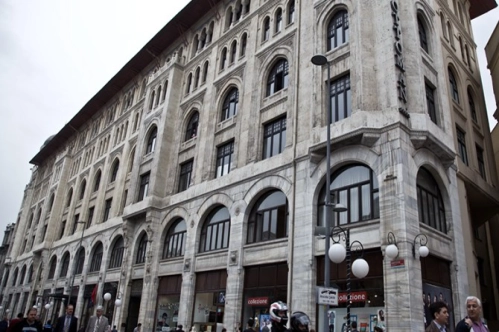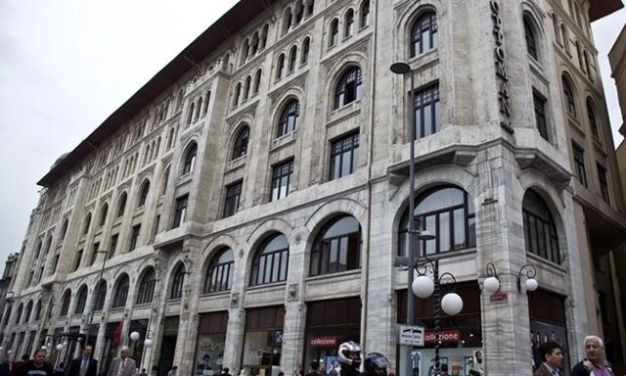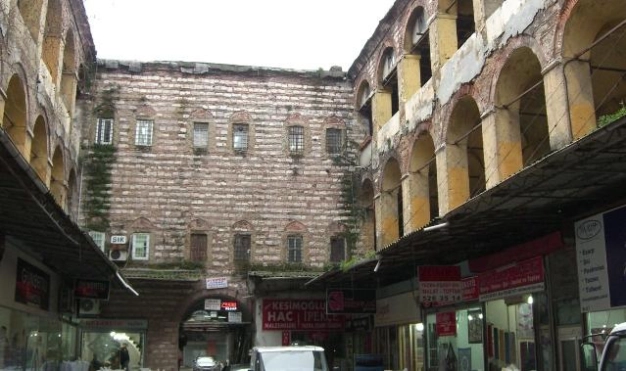- Son Dakika
- Gündem
- Ekonomi
- Finans
- Yazarlar
- Sektörel
- Dünya
- Kültür-Sanat
- Teknoloji
- FOTOĞRAF GALERİSİ
- VİDEO GALERİSİ
- e-Gazete
Gelişmelerden haberdar olmak için İstanbul Ticaret Haberleri uygulamasını indirin

SÜMEYRA YARIŞ TOPAL / ISTANBUL COMMERCE
 Having been the capital of first the Byzantine Empire, and then that of the Ottomans, Istanbul was always a center of trade. The historical city had been the world's most populous city for three centuries from the 16th on, was also a popular destination for merchants, due to its unique position connecting Asia and Europe. The most important symbols of trade in the city were, the Hans. In earlier days, hans offered both lodging and a place to exhibit wares for merchants.
Having been the capital of first the Byzantine Empire, and then that of the Ottomans, Istanbul was always a center of trade. The historical city had been the world's most populous city for three centuries from the 16th on, was also a popular destination for merchants, due to its unique position connecting Asia and Europe. The most important symbols of trade in the city were, the Hans. In earlier days, hans offered both lodging and a place to exhibit wares for merchants.
Later on, they assumed different functions, but always remained the heart of commercial life. Even though only around 100 of them remains today, compared to their presence in almost every street of the city in earlier centuries, they nonetheless are not in stark contrast compared to their earlier standing.
Considered as monuments to Turkish to Turkey's commercial life, the hans' roots date back to caravanserais. Caravanserais were built on the beaten paths of trade, to provide lodging to the men of commerce, and also offered opportunities to set up networks for the merchants.
The history of Istanbul's hans begins in the 15th Century. The oldest remaining han of Istanbul is the Kürkçü Han, built right after the conquest of Istanbul. Located on Mahmutpaşa Yokuşu, the han has two floors and two courtyards.
While the upper floor accommodated guests, the lower floor provided stables for the rides of guests. The historical building survived to date, in pretty good shape. To boot, it maintains its function from the 15th Century, with the stores, offices, and storage rooms in it.
FOR EACH PROFESSION
As centuries passed, the functions and architectural characteristics of hans began to change. In 17th Century, dedicated hans sprout up for each profession. These hans, however, differ from the earlier ones, as they did not offer lodging.
In these hans, the ground floor was dedicated to service and storage, while the upper floor served as offices. The commercial hans were named after the profession which occupied most of the stores in the han: Pastırmacı (Pastrami Makers) Han, Sepetçi (Basket Weavers) Han, Çorapçı (Sock Weavers) Han, Kaşıkçı (Spoon Makers) Han etc. Today, the commercial hans, which mostly date back to the 17th Century, maintain their purpose.
Hans had their golden age in the 18th Century, but were replaced by office buildings by the 20th Century. The traditional hans which had stables underneath were by then outmoded by new forms which offered different functions for the growing population of Istanbul.
These are the ones which look like apartment buildings, but which contain numerous offices, offering the function of today's business centers. The best example of these would be the Vakıf Hans built in early 20th Century.
REMAINING ONES
 Having served as the sweetheart of commerce for 400 years to follow the conquest of Istanbul, the hans of Istanbul assumed different functions through the centuries. Even though their numbers fell from hundreds during the ottoman times, one can still come across some old hans in Istanbul. Particularly the hans around Eminönü continue to serve, albeit with slightly updated functions.
Having served as the sweetheart of commerce for 400 years to follow the conquest of Istanbul, the hans of Istanbul assumed different functions through the centuries. Even though their numbers fell from hundreds during the ottoman times, one can still come across some old hans in Istanbul. Particularly the hans around Eminönü continue to serve, albeit with slightly updated functions.